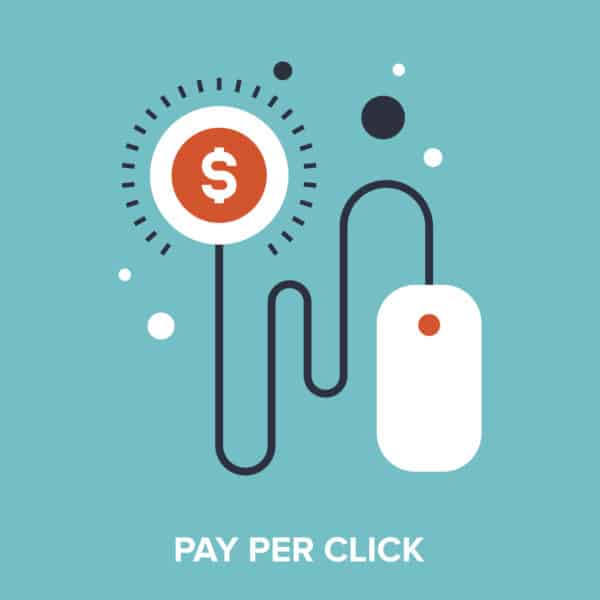
As consumers become more engaged in their own healthcare, online research and shopping play a bigger role in your facility’s ability to attract potential leads. Paid search campaigns can help skilled nursing facilities control the message that consumers see when they search for services, as well as ensure that the facility is visible as a top option for care when a person begins their search.
Ordinary organic search results (certainly not to be discounted in your marketing program) are rankings on the results page because search engines have determined that you are a good result for a searcher’s needs. Paid search (pay-per-click) is a set of search results, generally at the top of the page but also at the bottom or in the map results, that are displayed because a business has paid for that placement.
Here are some tips for your facility in establishing and managing a pay-per-click program:
Set goals
What customers are you trying to attract – short-term, long-term, or perhaps consumers looking for specific services? We’ve helped clients reach goals such as filling memory care units and promoting specialty rehabilitation programs. Defining your goals will guide your campaign strategy and budget.
Geography
When setting your goals, remember that geography plays a part in the selection of your facility. Understand the geographic area that a resident or family could realistically travel and do not target beyond that. If you promote ads to people who are outside of that range, you risk paying for leads that will never convert.
Referring hospitals
Referring hospitals are the exception to the geography rule. If your patients regularly come from specific hospitals, make sure target those hospitals. But write your ads in a manner that only attracts patients that want services in your region. You can easily do this by adding your location information to the ad, thereby deterring searchers who don’t want services there.
Set your budget
What is the cost of an empty bed? If you calculate the monthly loss of revenue for operating below your census, it’s generally logical to spend somewhere less than or equal to that amount to market those services. After you begin your program, we can help you understand the cost per acquisition for leads, and you will be able to calculate what percentage of leads convert to admissions. This calculation will help you determine your budget for your paid search program.
Adapt to consumer behavior
Maybe you want to attract short-term rehabilitation patients. It’s easy to set up an ad campaign that targets short-term rehab needs, but you may find that those kinds of keywords don’t result in as high of a search volume as keywords related to long-term care. In fact, many consumers just fall back on the general term “nursing home” when searching for care.
We aren’t recommending that you start with a nursing home-focused campaign, but we are suggesting that you loosen your initial keyword parameters enough to increase your impression share and garner new leads. You can then adjust your keywords based on how well your ads perform.
Pay-Per-Click and “Nursing Home”

The term “nursing home” holds Google Trends’ highest interest rating, ranging from 85-95. For comparison, “cardiac rehab” has a 2-3, and “skilled nursing facility” is about 0. If you choose to use “nursing home” as a campaign focus, understand that the volume of search is so great that you will probably spend as much money you are willing to budget. If you use a high-volume search term, separate it from your other campaigns and give it its own budget so that it doesn’t drain your spend. You may benefit from these leads, but given the cost, you will want to track results and adjust your budget accordingly.
(Google Trends is a search trend feature that shows how frequently a given search term is used on Google’s search engine. Numbers represent search interest relative to the highest point on the chart for the given region and time. A value of 100 is the peak popularity for the term. A value of 50 means that the term is half as popular. A score of 0 means there was not enough data for this term.)
Beyond Google
Google is certainly the place to start—it garners over 88% of search engine traffic in the US. But once you’ve found your footing in Google, Bing offers some nice low-hanging fruit. While Bing only gets about 6.5% of search traffic, according to their ad data, 57% of their users are over 45, meaning that over half of them are in your target demographic.
Facebook advertising is appealing because of its low cost, but it is better for brand awareness, local event promotion, or recruiting.
Track leads to conversions
Reporting around pay-per-click advertising is becoming more and more robust. We can provide you with information about the number of leads generated from a campaign, with details about each lead via calls and form fills, and even provide analytics relating to the increase in traffic and conversions after beginning your campaign.
You will consider your campaign most successful if you take the next step and track those leads to conversions and establish pre-campaign and post-campaign metrics such as average daily census or number of admissions per month.
Paid search is not inexpensive, but done right, it can be a marketer’s dream. Results are highly trackable, so it’s one of the few areas of marketing where concrete success can be declared with numbers on increased admissions!
Other marketing activities, like social media, email marketing, and even print materials are still important to your facility’s overall success… but tracking direct sales results is very difficult. Pay-per-click offers that tracking, along with the desired result of increased leads and admissions to skilled nursing home providers.
